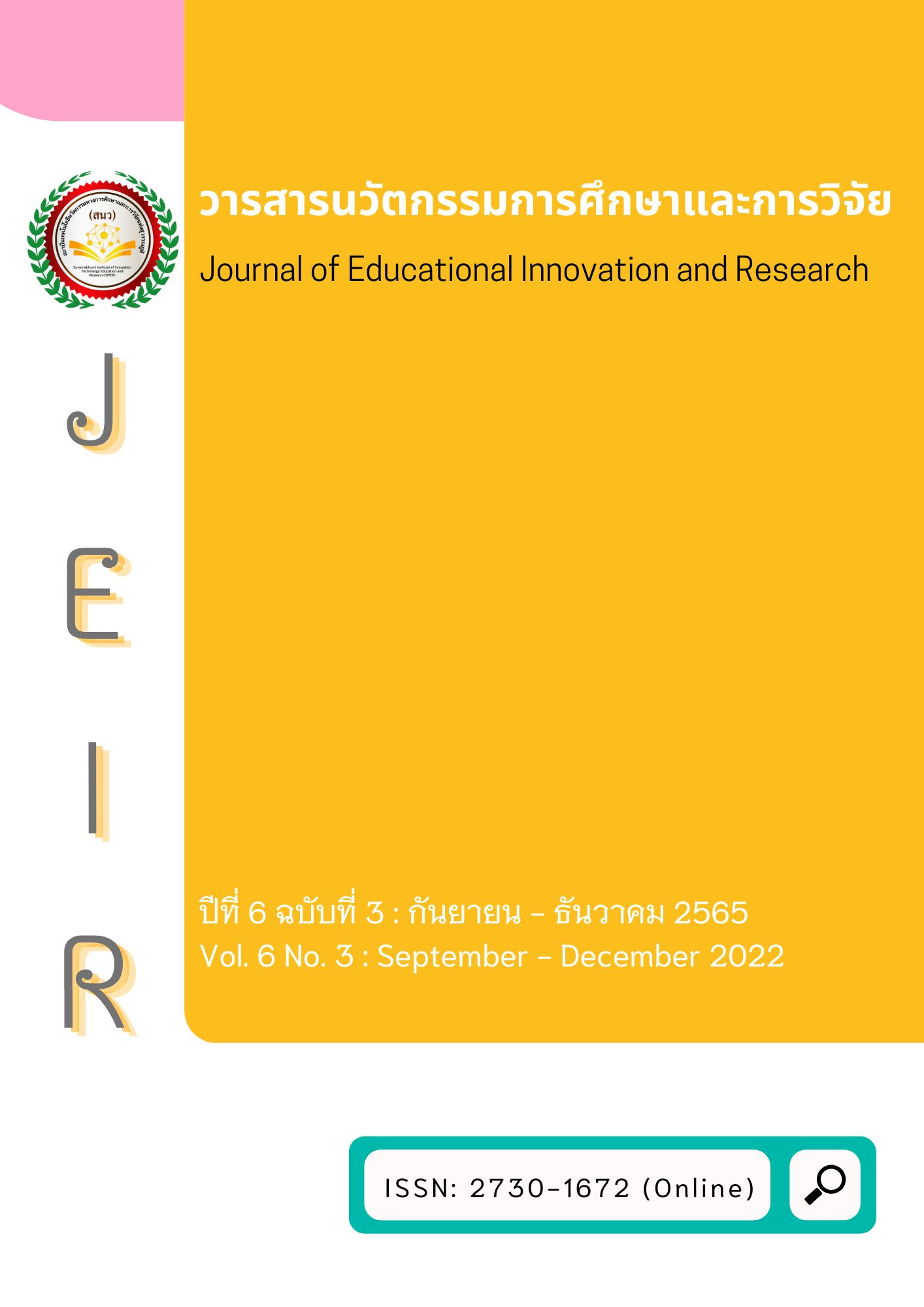ละครวิทยุข้ามสื่อแบบมีส่วนร่วมด้วยการมีปฏิสัมพันธ์ในการสื่อสารแบบกลุ่ม ผ่านสื่อสังคมออนไลน์ เพื่อส่งเสริมสุขภาพที่ดีของคนทำงานออฟฟิศ
Main Article Content
บทคัดย่อ
การศึกษาวิจัยมีวัตถุประสงค์เพื่อ 1) พัฒนากระบวนการผลิตข้ามสื่อแบบมีส่วนร่วมด้วยการมีปฏิสัมพันธ์ในการสื่อสารแบบกลุ่มผ่านสื่อสังคมออนไลน์ 2) วิเคราะห์หาคุณภาพละครวิทยุข้ามสื่อแบบมีส่วนร่วมด้วยการมีปฏิสัมพันธ์ในการสื่อสารแบบกลุ่มผ่านสื่อสังคมออนไลน์ เพื่อส่งเสริมสุขภาพที่ดีของคนทำงานออฟฟิศ 3) เปรียบเทียบความรู้และพฤติกรรมก่อนและหลังรับฟังละครวิทยุที่พัฒนาขึ้น และ4) ศึกษาความพึงพอใจต่อการรับฟังละครวิทยุที่พัฒนาขึ้น กลุ่มตัวอย่างคือบุคคลทำงานออฟฟิศในเขตกรุงเทพมหานคร จำนวน 400 คน ด้วยการคำนวณจากสูตร ทาโร่ ยามาเน่ ใช้วิธีการสุ่มอย่างง่าย วิเคราะห์ข้อมูลใช้ค่าเฉลี่ย ส่วนเบี่ยงเบนมาตรฐาน สถิติค่าที
ผลการวิจัยพบว่า กระบวนการผลิตข้ามสื่อแบบมีส่วนร่วมด้วยการมีปฏิสัมพันธ์ในการสื่อสารแบบกลุ่มผ่านสื่อสังคมออนไลน์ มีความเหมาะสมระดับมากที่สุด คุณภาพการผลิตละครวิทยุมีคุณภาพระดับมากที่สุด การวิเคราะห์เปรียบเทียบค่าเฉลี่ยความรู้และพฤติกรรมต่อการดูแลสุขภาพ พบว่าค่าเฉลี่ยต่อการดูแลสุขภาพในการทำงานหลังฟังสูงกว่าก่อนการรับฟังละครวิทยุ อย่างมีนัยสำคัญทางสถิติที่ระดับ .05 ผลการทดสอบความรู้ก่อนการรับฟังมีคะแนนเฉลี่ย 5.84 หลังรับฟังมีคะแนนเฉลี่ย 9.97 จำแนกตามข้อคำถาม พบว่าหลังรับฟังมีจำนวนคนที่ตอบถูกเพิ่มขึ้นทุกข้อคำถาม ผลการทดสอบระดับพฤติกรรมการดูแลสุขภาพก่อนและหลังการรับฟัง พบว่า พฤติกรรมก่อนการรับฟังโดยรวมอยู่ในระดับปานกลางหลังการรับฟังโดยรวมอยู่ระดับ ดีมาก และความพึงพอใจต่อการรับฟังละครวิทยุที่พัฒนาขึ้นในภาพรวม อยู่ในระดับพึงพอใจมากที่สุด
Article Details

อนุญาตภายใต้เงื่อนไข Creative Commons Attribution-NonCommercial-NoDerivatives 4.0 International License.
เอกสารอ้างอิง
Kunnatee Poomsanguan. (2014). Health and health promotion, and the important role of nurses. Army Nurse Journal, 15(2), 10-14.
Labor Welfare Division. (2004). Quality of Work Life. Labor brochure.
Nattha Thosaporn. (2013). The production of a radio drama program that reflects the life of people in the working ages. Faculty of Information and Communication Technology Silpakorn University.
Negar Monazam Tabrizi and Sharon Morgan. (2014). Models for Describing Knowledge Sharing Practices in the Healthcare Industry: Example of Experience Knowledge Sharing. International Journal of Management and Applied Research,1(2), 48-67.
Nikhom Chaikhunpol, Santad Thongrin and Wittayatorn Tokaew. (2017). Development of a communication interaction model for cultural tourism in Chiang Mai Province through mobile communication tools. Human Sciences Faculty of Humanities Chiang Mai University, 18(2), 176-212.
Niklas Odén. (2013). Mechanisms within cross media stories, An analytical framework combining cross media phenomena with storytelling elements. Department of informatics, Cross Media Interaction Design, UMEA University.
Pattira Klinlakha. (2015). Handbook for the production of entertainment radio dramas in an imaginary world. Faculty of Communication Arts, Hat Yai University. Piyawat Srisawatnuphap. Office syndrome. Retrieved January 23, 2022, from https://www.sikarin.com/content /detail/11
Sakulsri Srisarakham. (2018). Developing content innovation through cross-media storytelling strategies for television programs. Bachelor of Business Communications Journal, 12(1), 193-225.
Songrit Thongmeekwan and Sakuntala Sae-Tiao. (2018). Preventive Behaviors and Perceived Risk of Computer Syndrome among Support Personnel. Journal of Nursing Siam University, 19(37), 69-83.
Startup Now.(2019). Facebook Group Change the target audience into brand lovers 2019. [Online]. Retrieved January 23, 2022, from https://www.startupnow.in.th/facebook-group/
Tham Chuasathapanasiri. (2015). Transmedia: story-telling. Journal of Communication Arts and Innovation, National Institute of Development Administration, 2(1), 59-88.
Worawut Thadbantom and Worasiri Watkhamlam. (2014). A study of the creative drama radio script process of Kantana Group. Siam Communication Review, 13(14), 55-66.


